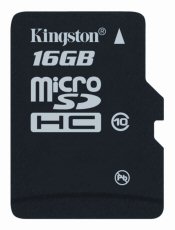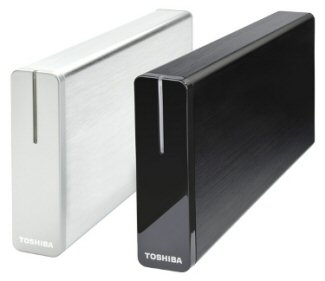Different Ways to SPEED UP Windows XP
Increase RAM: If you are running 128mb or 256mb of Ram, it's pretty cheap and easy to upgrade to 512mb. Although this suggestion will actually cost money but we think only 450/- Rs will increase Your computer's speed much more than before. Remember to buy RAM of good quality. In Pakistan the trusted RAM is of Kingston.
Uninstall Useless Programs: Having old games or other software you no longer use can take up a lot of space on your hard drive, which can lead to an overall decrease in your PC's performance.
Removing old programs is easy. From the Control Panel click on the "Add or Remove Programs" Icon. You can safely remove programs like games, demos, and other software you no longer use.
Removing old programs is easy. From the Control Panel click on the "Add or Remove Programs" Icon. You can safely remove programs like games, demos, and other software you no longer use.
Turn off Windows Animations: Fancy sliding, fading and animated effects that windows uses by default can easily be turned off, and will make the reaction time of simple tasks like opening and moving windows, taskbars, etc... much faster.
From the Control Panel, click on the "System" icon. Click on the Advanced tab. Click the "Settings" button underneath "Performance". Uncheck the options related to animations, and other unneeded visual effects.
From the Control Panel, click on the "System" icon. Click on the Advanced tab. Click the "Settings" button underneath "Performance". Uncheck the options related to animations, and other unneeded visual effects.
Disable File Indexing: Indexing service gets info from files on the hard drive and creates a "searchable keyword index."
If you don't use the XP search feature often to look for documents, you can turn this feature off, and the difference you'll notice is a slight increase in the time it takes for your computer to find a file, but an overall increase in general speed for everything else is much better than it.
From My Computer > right-click on the C: Drive > select Properties.
Uncheck "Allow Indexing Service to index this disk for fast file searching." Apply changes to "C: sub folders and files," and click OK.
If you don't use the XP search feature often to look for documents, you can turn this feature off, and the difference you'll notice is a slight increase in the time it takes for your computer to find a file, but an overall increase in general speed for everything else is much better than it.
From My Computer > right-click on the C: Drive > select Properties.
Uncheck "Allow Indexing Service to index this disk for fast file searching." Apply changes to "C: sub folders and files," and click OK.
Clean Up Prefetch temp & cache file: Windows stores a lot of temporary files that can be safely cleaned out once a month or so. This will speed up Your Windows XP and of course You will enjoy much better speedy computer then.
For this purpose You can use Free Software like CCleaner which You can easily download from software's section of Google URDU. So download it, install it and enjoy it Great Features, All Free and without any cost.
For this purpose You can use Free Software like CCleaner which You can easily download from software's section of Google URDU. So download it, install it and enjoy it Great Features, All Free and without any cost.
Always USE Good Antivirus Protection: Its very important for a PC to Run in a proper way, You need a good antivirus program. There are many antivirus programs now a days in market some of them are free too but less in features. Anyway You can download AVG (Simple and Easy to USE Antivirus) and install it on Yours system. Its Freeware version is available at its site and We think its one of the Best Ant viruses Which are FREE.
You can download its Premium version and get its key from Google Urdu's Software's section also. In this way You can enjoy Registered Version of AVG.
You can download its Premium version and get its key from Google Urdu's Software's section also. In this way You can enjoy Registered Version of AVG.
Media Files: Do not store media files like mp3, dat, ram, wmv etc Audio and Video Files in the Windows XP drive i.e. C-Drive. Use other hard disk drives for storing media files.
Computer Tip & Tricks, Office, Windows tipsAll mIRC Commands
/ Recalls the previous command entered in the current window./! Recalls the last command typed in any window.
/action {action text} Sends the specifed action to the active channel or query window.
/add [-apuce] {filename.ini} Loads aliases, popups, users, commands, and events.
/ame {action text} Sends the specifed action to all channels which you are currently on.
/amsg {text} Sends the specifed message to all channels which you are currently on.
/auser {level} {nick|address} Adds a user with the specified access level to the remote users
list.
/auto [on|off|nickname|address] Toggles auto-opping of a nick or address or sets it on or off
totally.
/away {away message} Sets you away leave a message explaining that you are not currently paying
attention to IRC.
/away Sets you being back.
/ban [#channel] {nickname} [type] Bans the specified nick from the curent or given channel.
/beep {number} {delay} Locally beeps 'number' times with 'delay' in between the beeps. /channel
Pops up the channel central window (only works in a channel).
/clear Clears the entire scrollback buffer of the current window.
/ctcp {nickname} {ping|finger|version|time|userinfo|clientinfo} Does the given ctcp request on
nickname.
/closemsg {nickname} Closes the query window you have open to the specified nick.
/creq [ask | auto | ignore] Sets your DCC 'On Chat request' settings in DCC/Options.
/dcc send {nickname} {file1} {file2} {file3} ... {fileN} Sends the specified files to nick.
/dcc chat {nickname} Opens a dcc window and sends a dcc chat request to nickname.
/describe {#channel} {action text} Sends the specifed action to the specified channel window.
/dde [-r] {service} {topic} {item} [data] Allows DDE control between mIRC and other
applications.
/ddeserver [on [service name] | off] To turn on the DDE server mode, eventually with a given
service name.
/disable {#groupname} De-activates a group of commands or events.
/disconnect Forces a hard and immediate disconnect from your IRC server. Use it with care.
/dlevel {level} Changes the default user level in the remote section.
/dns {nickname | IP address | IP name} Uses your providers DNS to resolve an IP address.
/echo [nickname|#channel|status] {text} Displays the given text only to YOU on the given place
in color N.
/enable {#groupname} Activates a group of commands or events.
/events [on|off] Shows the remote events status or sets it to listening or not.
/exit Forces mIRC to closedown and exit.
/finger Does a finger on a users address.
/flood [{numberoflines} {seconds} {pausetime}] Sets a crude flood control method.
/fsend [on|off] Shows fsends status and allows you to turn dcc fast send on or off.
/fserve {nickname} {maxgets} {homedirectory} [welcome text file] Opens a fileserver.
/guser {level} {nick} [type] Adds the user to the user list with the specified level and
address type.
/help {keyword} Brings up the Basic IRC Commands section in the mIRC help file.
/ignore [on|off|nickname|address] Toggles ignoring of a nick or address or sets it on or off
totally.
/invite {nickname} {#channel} Invites another user to a channel.
/join {#channel} Makes you join the specified channel.
/kick {#channel} {nickname} Kicks nickname off a given channel.
/list [#string] [-min #] [-max #] Lists all currently available channels, evt. filtering for
parameters.
/log [on|off] Shows the logging status or sets it on or off for the current window.
/me {action text} Sends the specifed action to the active channel or query window.
/mode {#channel|nickname} [[+|-]modechars [parameters]] Sets channel or user modes.
/msg {nickname} {message} Send a private message to this user without opening a query window.
/names {#channel} Shows the nicks of all people on the given channel.
/nick {new nickname} Changes your nickname to whatever you like.
/notice {nick} {message} Send the specified notice message to the nick.
/notify [on|off|nickname] Toggles notifying you of a nick on IRC or sets it on or off totally.
/onotice [#channel] {message} Send the specified notice message to all channel ops.
/omsg [#channel] {message} Send the specified message to all ops on a channel.
/part {#channel} Makes you leave the specified channel.
/partall Makes you leave all channels you are on.
/ping {server address} Pings the given server. NOT a nickname.
/play [-c] {filename} [delay] Allows you to send text files to a window.
/pop {delay} [#channel] {nickname} Performs a randomly delayed +o on a not already opped nick.
/protect [on|off|nickname|address] Toggles protection of a nick or address or sets it on or off
totally.
/query {nickname} {message} Open a query window to this user and send them the private message.
/quit [reason] Disconnect you from IRC with the optional byebye message.
/raw {raw command} Sends any raw command you supply directly to the server. Use it with care!!
/remote [on|off] Shows the remote commands status or sets it to listening or not.
/rlevel {access level} Removes all users from the remote users list with the specified access
level.
/run {c:\path\program.exe} [parameters] Runs the specified program, evt. with parameters.
/ruser {nick[!]|address} [type] Removes the user from the remote users list.
/save {filename.ini} Saves remote sections into a specified INI file.
/say {text} Says whatever you want to the active window.
/server [server address [port] [password]] Reconnects to the previous server or a newly
specified one.
/sound [nickname|#channel] {filename.wav} {action text} Sends an action and a fitting sound.
/speak {text} Uses the external text to speech program Monologue to speak up the text.
/sreq [ask | auto | ignore] Sets your DCC 'On Send request' settings in DCC/Options.
/time Tells you the time on the server you use.
/timer[N] {repetitions} {interval in seconds} {command} [| {more commands}] Activates a timer.
/topic {#channel} {newtopic} Changes the topic for the specified channel.
/ulist [{|}]{level} Lists all users in the remote list with the specified access levels.
/url [-d] Opens the URL windows that allows you to surf the www parallel to IRC.
/uwho [nick] Pops up the user central with information about the specified user.
/who {#channel} Shows the nicks of all people on the given channel.
/who {*address.string*} Shows all people on IRC with a matching address.
/whois {nickname} Shows information about someone in the status window.
/whowas {nickname} Shows information about someone who -just- left IRC.
/wavplay {c:\path\sound.wav} Locally plays the specified wave file.
/write [-cidl] {filename} [text] To write the specified text to a .txt file.
How to send anonymous email
Welcome to guide on how to send ANONYMOUS e-mails to someone without a prog.We are going to explain a way to send home-made e-mails. We mean its a way to send Anonymous e-mails without a program, it doesn't take to much time and its cool and you can have more knowledge than with a stupid program that does all by itself.
Go to Start, then Run..., You have to Telnet (Xserver) on port 25
Well, (In this Xserver) you have to put the name of a server without the ( ) of course...
Put in iname.com in (Xserver) because it always work it is a server with many bugs in it.
(25) mail port.
So now we are like this.
|
Then When you have telnet open put the following like it is written
helo
and the machine will reply with smth.
Notice for newbies: If you do not see what you are writing go to Terminal's menu (in telnet) then to Preferences and in the Terminal Options you tick all options available and in the emulation menu that's the following one you have to tick the second option.
Now you will se what you are writing.
then you put:
mail from:<whoeveryouwant@whetheveryouwant.whetever.whatever> and so on...
If you make an error start all over again
Example:
mail from:<saeed@microsoft.com.net>
You hit enter and then you put:
rcpt to:<saima@saima'sworld.com>
This one has to be an existance address as you are mailing anonymously to him.
Then you hit enter, and then type
Data and hit enter once more.
Then you write
Subject: whatever you want and then hit enter. Then
Write your mail and hit enter again.
Finally you write
quit
hit enter one more time and it's done.
Try first do it with yourself I mean mail anonymously yourself so you can test it!
Don't be asshole and write fucking e-mails to big corps. Because its symbol of stupidity and childhood and it has very effect on People doing this and they will treat you as a Lamer!
Boot Windows xp Fast
Follow the following steps to boot windows xp fast1. Open notepad.exe, type "del c:\windows\prefetch\ntosboot-*.* /q" (without the quotes) & save as "ntosboot.bat" in c:\
2. From the Start menu, select "Run..." & type "gpedit.msc".
3. Double click "Windows Settings" under "Computer Configuration" and double click again on "Shutdown" in the right window.
4. In the new window, click "add", "Browse", locate your "ntosboot.bat" file & click "Open".
6. From the Start menu, select "Run..." & type "devmgmt.msc".
7. Double click on "IDE ATA/ATAPI controllers"
8. Right click on "Primary IDE Channel" and select "Properties".
9. Select the "Advanced Settings" tab then on the device or 1 that doesn't have 'device type' greyed out select 'none' instead of 'autodetect' & click "OK".
10. Right click on "Secondary IDE channel", select "Properties" and repeat step 9.
11. Reboot your computer
Windows Xp Shortcuts
Getting used to using your keyboard exclusively and leaving your mouse behind will make you much more efficient at performing any task on any Windows system.
You can use the following keyboard shortcuts every day:
Windows key + R = Run menu
This is usually followed by:
cmd = Command Prompt
iexplore + "web address" = Internet Explorer
compmgmt.msc = Computer Management
dhcpmgmt.msc = DHCP Management
dnsmgmt.msc = DNS Management
services.msc = Services
eventvwr = Event Viewer
dsa.msc = Active Directory Users and Computers
dssite.msc = Active Directory Sites and Services
Windows key + E = Explorer
ALT + Tab = Switch between windows
ALT, Space, X = Maximize window
CTRL + Shift + Esc = Task Manager
Windows key + Break = System properties
Windows key + F = Search
Windows key + D = Hide/Display all windows
[Alt] and [Esc] Switch between running applications
[Alt] and letter Select menu item by underlined letter
[Ctrl] and [Esc] Open Program Menu
[Ctrl] and [F4] Close active document or group windows (does not work with some applications)
[Alt] and [F4] Quit active application or close current window
[Alt] and [-] Open Control menu for active document
Ctrl] Lft., Rt. arrow Move cursor forward or back one word
Ctrl] Up, Down arrow Move cursor forward or back one paragraph
[F1] Open Help for active application
Windows+M Minimize all open windows
Shift+Windows+M Undo minimize all open windows
Windows+F1 Open Windows Help
Windows+Tab Cycle through the Taskbar buttons
Windows+Break Open the System Properties dialog box
Explorer Shortcuts:
END....... Display the bottom of the active window.
HOME....... Display the top of the active window.
NUM LOCK+ASTERISK....... on numeric keypad (*) Display all subfolders under the selected folder.
NUM LOCK+PLUS SIGN....... on numeric keypad (+) Display the contents of the selected folder.
NUM LOCK+MINUS SIGN....... on numeric keypad (-) Collapse the selected folder.
LEFT ARROW...... Collapse current selection if it's expanded or select parent folder.
RIGHT ARROW....... Display current selection if it's collapsed, or select first subfolder.
Type the following commands in your Run Box:
(Windows Key + R) or Start Run
devmgmt.msc = Device Manager
msinfo32 = System Information
cleanmgr = Disk Cleanup
ntbackup = Backup or Restore Wizard (Windows Backup Utility)
mmc = Microsoft Management Console
excel = Microsoft Excel (If Installed)
msaccess = Microsoft Access (If Installed)
powerpnt = Microsoft PowerPoint (If Installed)
winword = Microsoft Word (If Installed)
frontpg = Microsoft FrontPage (If Installed)
notepad = Notepad
wordpad = WordPad
calc = Calculator
msmsgs = Windows Messenger
mspaint = Microsoft Paint
wmplayer = Windows Media Player
rstrui = System Restore
netscp6 = Netscape 6.x
netscp = Netscape 7.x
netscape = Netscape 4.x
waol = America Online
control = Opens the Control Panel
control printers = Opens the Printers Dialog
Shortcuts For Windows XP:
Copy. CTRL+C
Cut. CTRL+X
Paste. CTRL+V
Undo. CTRL+Z
Delete. DELETE
Delete selected item permanently without placing the item in the Recycle Bin. SHIFT+DELETE
Copy selected item. CTRL while dragging an item
Create shortcut to selected item. CTRL+SHIFT while dragging an item
Rename selected item. F2
Move the insertion point to the beginning of the next word. CTRL+RIGHT ARROW
Move the insertion point to the beginning of the previous word. CTRL+LEFT ARROW
Move the insertion point to the beginning of the next paragraph. CTRL+DOWN ARROW
Move the insertion point to the beginning of the previous paragraph. CTRL+UP ARROW
Highlight a block of text. CTRL+SHIFT with any of the arrow keys
Select more than one item in a window or on the desktop, or select text within a document. SHIFT with any of the arrow keys
Select all. CTRL+A
Search for a file or folder. F3
View properties for the selected item. ALT+ENTER
Close the active item, or quit the active program. ALT+F4
Open the shortcut menu for the active window using ALT+SPACEBAR
Close the active document in programs that allow you to have multiple documents open simultaneously. CTRL+F4
Switch between open items. ALT+TAB
Cycle through items in the order they were opened. ALT+ESC
Cycle through screen elements in a window or on the desktop. F6
Display the Address bar list in My Computer or Windows Explorer. F4
Display the shortcut menu for the selected item. SHIFT+F10
Display the System menu for the active window. ALT+SPACEBAR
Display the Start menu. CTRL+ESC
Display the corresponding menu. ALT+Underlined letter in a menu name
Carry out the corresponding command. Underlined letter in a command name on an open menu
Activate the menu bar in the active program. F10
Open the next menu to the right, or open a submenu. RIGHT ARROW
Open the next menu to the left, or close a submenu. LEFT ARROW
Refresh the active window. F5
View the folder one level up in My Computer or Windows Explorer. BACKSPACE
Cancel the current task. ESC
SHIFT when you insert a CD into the CD-ROM drive Prevent the CD from automatically playing.
Use these keyboard shortcuts for dialog boxes:
Move forward through tabs. CTRL+TAB
Move backward through tabs. CTRL+SHIFT+TAB
Move forward through options. TAB
Move backward through options. SHIFT+TAB
Carry out the corresponding command or select the corresponding option. ALT+Underlined letter
Carry out the command for the active option or button. ENTER
Select or clear the check box if the active option is a check box. SPACEBAR
Select a button if the active option is a group of option buttons. Arrow keys
Display Help. F1
Display the items in the active list. F4
Open a folder one level up if a folder is selected in the Save As or Open dialog box. BACKSPACEDisplay or hide the Start menu. WIN Key
Display the System Properties dialog box. WIN Key+BREAK
Show the desktop. WIN Key+D
Minimize all windows. WIN Key+M
Restores minimized windows. WIN Key+Shift+M
Open My Computer. WIN Key+E
Search for a file or folder. WIN Key+F
Search for computers. CTRL+WIN Key+F
Display Windows Help. WIN Key+F1
Lock your computer if you are connected to a network domain, or switch users if you are not connected to a network domain. WIN Key+ L
Open the Run dialog box. WIN Key+R
Open Utility Manager. WIN Key+U
BIOS Update Procedure
All latest Motherboards today, 486/ Pentium / Pentium Pro etc.,ensure that upgrades are easily obtained by incorporating the system BIOS in a FLASH Memory component. With FLASH BIOS, there is no need to replace an EPROM component. Once downloaded, the upgrade utility fits on a floppy disc allowing the user to save, verify and update the system BIOS. A hard drive or a network drive can also be used to run the newer upgrade utilities. However, memory managers can not be installed while upgrading.
Most pre-Pentium motherboards do not have a Flash BIOS. The following instructions therefore do not apply to these boards. If your motherboard does not have a Flash BIOS (EEPROM) you will need to use an EPROM programmer to re-program the BIOS chip. See your dealer for more information about this.
Please read the following instructions in full before starting a Flash BIOS upgrade:
A. Create a Bootable Floppy (in DOS)
•With a non-formatted disk, type the following:
format a:/s
•If using a formatted disk, type:
sys a:
This procedure will ensure a clean boot when you are flashing the new BIOS.
B. Download the BIOS file
•Download the correct BIOS file by clicking on the file name of the BIOS file you wish to download.
•Save the BIOS file and the Flash Utility file in the boot disk you have created. Unzip the BIOS file and the flash utility file. If you don't have an "unzip" utility, download the WinZip for Windows 95 shareware/ evaluation copy for that one time use from _www.winzip.com or _www.pkware.com. Most CD ROMs found in computer magazines, have a shareware version of WinZip on them.
•You should have extracted two files:
Flash BIOS utility eg: flash7265.exe (for example)
BIOS eg: 6152J900.bin (example)
Use the latest flash utility available unless otherwise specified (either on the BIOS update page or in the archive file). This information is usually provided.
C. Upgrade the System BIOS
During boot up, write down the old BIOS version because you will need to use it for the BIOS backup file name.
Place the bootable floppy disk containing the BIOS file and the Flash Utility in drive a, and reboot the system in MS-DOS, preferably Version 6.22
•At the A:> prompt, type the corresponding Flash BIOS utility and the BIOS file with its extension.
For example:
flash625 615j900.bin
•From the Flash Memory Writer menu, select "Y" to "Do you want to save BIOS?" if you want to save (back up) your current BIOS (strongly recommended), then type the name of your current BIOS and its extension after FILE NAME TO SAVE: eg: a:\613J900.bin
Alternatively select "N" if you don't want to save your current BIOS. Beware, though, that you won't be able to recover from a possible failure.
•Select "Y" to "Are you sure to program?"
Windows Media Player Keyboard Shortcuts
In Windows Media Player, We can use the combination of different keyboard keys to accomplish routine task. By using these keys, we can increase the working speed in media player, otherwise require a conventional mouse to select menus and buttons options. Basically keyboard shortcuts keys help you to save time and we can perform any tasks without leaving the keyboard keys.
Here are windows media player keyboard shortcuts:
ALT+1 Adjust zoom to 50 percent
ALT+2 Adjust zoom to 100 percent
ALT+3 Adjust zoom to 200 percent
ALT+ENTER Display the video in full mode
ALT+F Go to media player File Menu
ALT+T Go to media player Tools Menu
ALT+V Go to media player View Menu
ALT+P Go to media player Play Menu
ALT+F4 Use to close media player
| |
CTRL+2 Display media player in skin mode
CTRL+B Use to play the previous item in media player
CTRL+F Use to play the next item in media player
CTRL+E Use to Eject CD or DVD from CD or DVD drive
CTRL+P Use to Play or Pause the item in media player
CTRL+T Use to repeat the items in media player
CTRL+SHIFT+B Use to Rewind a file in media player
CTRL+SHIFT+F Use to Fast Forward a file in media player
CTRL+SHIFT+S Use to play items slower than a normal speed
CTRL+SHIFT+ G Use to play items faster than a normal speed
CTRL+SHIFT+ N Use to play items at normal speed in media player
F8 Use to mute the volume in media player
F9 Use to decrease the volume in media player
F10 Use to increase the volume in media player
ENTER or SPACEBAR Use to play an item
Find Files at Computer
How to Find Files at Yours own and sombody's else Computer:
This tip will help you to enjoy the quick and easy way to find lost files on your computer. Here We recommends you, try to search a file with its file extensions (for example for word file, type *.doc, Excel *.xls, Acrobat *.pdf, *.ppt and *.exe for executable files. If you don't know the name of file but know that it contains a string of text then try to search for files containing specific text, type the text you want to find from any file or folder. This is time taking process but creates very precise result. In Look in, click the drive, folder, or network you want to search. To save time, always select the specified drive or location instead of whole computer.
Click Start Button, point to Search, and then click For File or Folders, a Search Results dialog box will appear. In Search for files or folders named, type the file name or folder name you want to find in containing text.
| |
Select Date to look for files that were created or modified on or between specific dates.
Select Type to look for files of a specific type, such as a text or WordPad document.
Select Size to look for files of a specific size.
Select Advanced Options to specify additional search criteria.
Mozilla Firefox Keyboard Shortcuts
Functional Keys for Mozilla Firefox:
F1 Opens Firefox help
F3 Find more text within the same webpage
F5 Reload the current webpage
F6 Toggles the cursor between the address/URL input box and the current webpage
F7 Toggles Caret Browsing on and off. Used to be able to select text on a webpage with the keyboard
F11 Switch to Full Screen mode
| |
CTRL + A Select all text on a webpage
CTRL + B Open the Bookmarks sidebar
CTRL + C Copy the selected text to the Windows clipboard
CTRL + D Bookmark the current webpage
CTRL + F Find text within the current webpage
CTRL + G Find more text within the same webpage
CTRL + H Opens the webpage History sidebar
CTRL + I Open the Bookmarks sidebar
CTRL + J Opens the Download Dialogue Box
CTRL + K Places the cursor in the Web Search box ready to type your search
CTRL + L Places the cursor into the URL box ready to type a website address
CTRL + M Opens your mail program (if you have one) to create a new email message
CTRL + N Opens a new Firefox window
CTRL + O Open a local file
CTRL + P Print the current webpage
CTRL + R Reloads the current webpage
CTRL + S Save the current webpage on your PC
CTRL + T Opens a new Firefox Tab
CTRL + U View the page source of the current webpage
CTRL + V Paste the contents of the Windows clipboard
CTRL + W Closes the current Firefox Tab or Window (if more than one tab is open)
CTRL + X Cut the selected text
CTRL + Z Undo the last action
Change Registration Information of Windows XP
Some time when windows is fully installed then we think that we have entered the wrong or invalid registered owner information during instalation process of Windows Xp. But don't worry now we can change the registered owner information any time, by using the technique given below whihc only requires little knowledge about editing windows registry.
| |
Follow the given steps to change the owner name:
First click on Start button then type Regedit in Run option.
Here locate the location to:
Go to HKEY_LOCAL_MACHINE/SOFTWARE/Microsoft/Windows NT/CurrentVersion
Here in right side panel, double click on RegisteredOwner and here change its value data as you wish.
Now close the registry editor and restart your computer after any changes to go into effect.
So Now it is very easy to change the name of registeration information of Windows XP owner.




















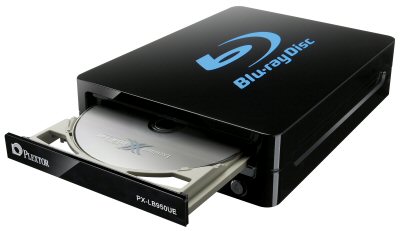
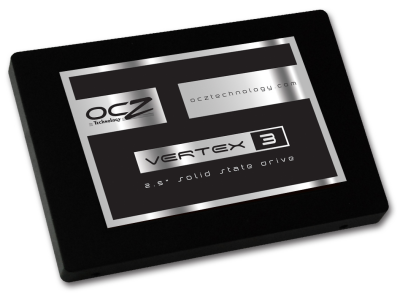
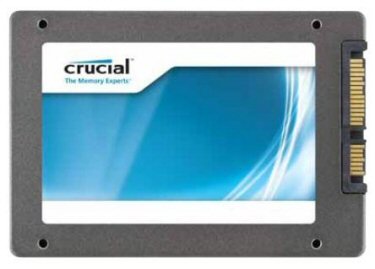
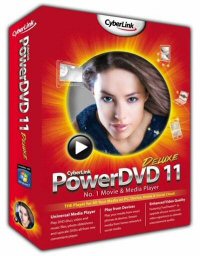
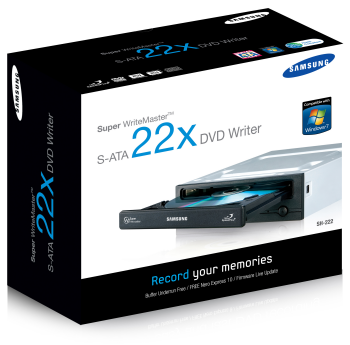
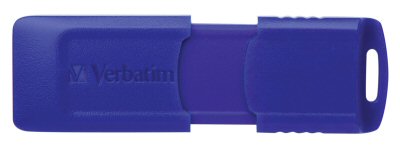
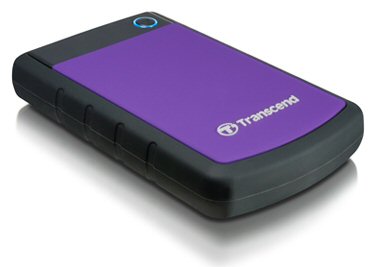

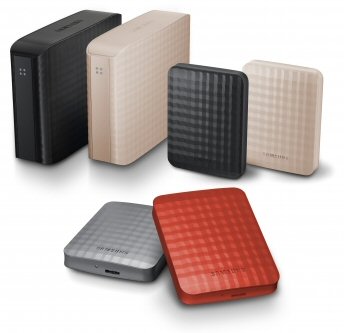

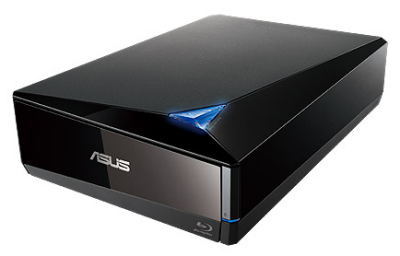
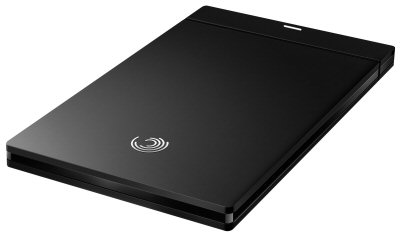
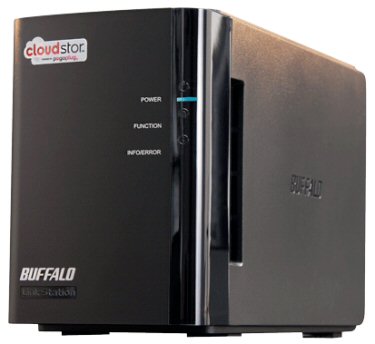
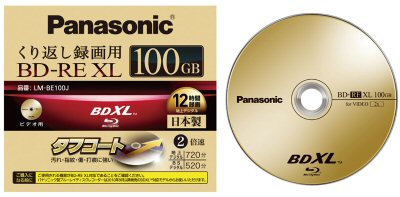
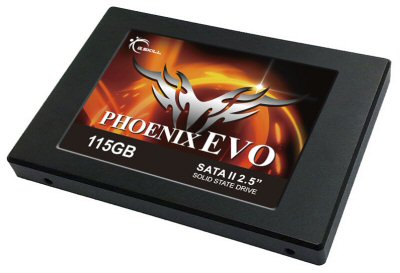
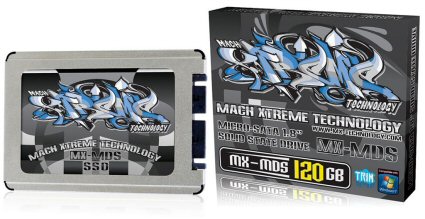
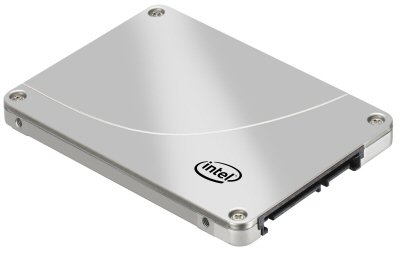
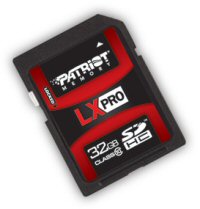
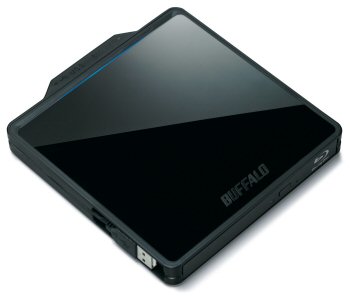
 d a high-speed SATA 6Gb/s interface, the PX-128M2S is capable of delivering up to 420MB/s sequential read and 210MB/s sequential write speeds. Plextor's new SSD also feature support for the Windows 7 TRIM command, dynamic wear leveling and the company's own Instant Restore technology which overcomes the problem of performance degradation.
d a high-speed SATA 6Gb/s interface, the PX-128M2S is capable of delivering up to 420MB/s sequential read and 210MB/s sequential write speeds. Plextor's new SSD also feature support for the Windows 7 TRIM command, dynamic wear leveling and the company's own Instant Restore technology which overcomes the problem of performance degradation. 